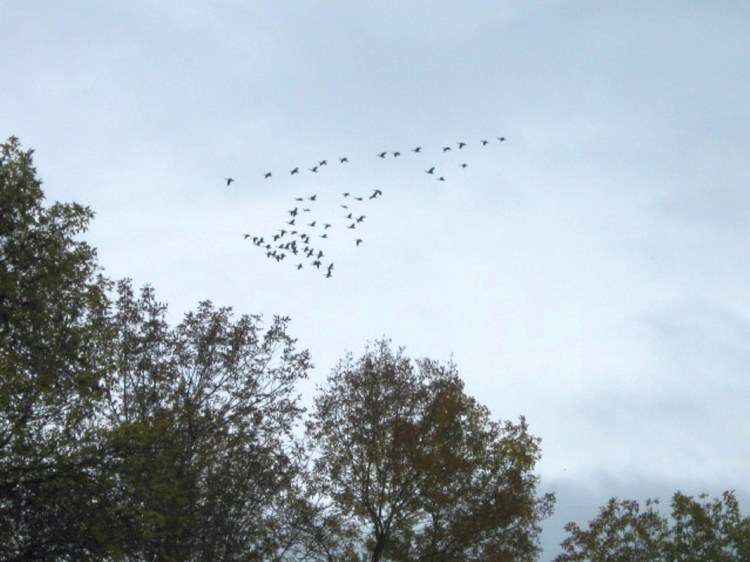When I got up Saturday there was a slight tell-tale chill rolling through the kitchen window, like a nip on the ear. The first faint bite of fall after a hot, hot summer. Birch leaves strewed the deck, and little orange blazes have been stirring in sugar maples for a couple of weeks. The birds had picked the red osier clean of berries. Wasn’t it just last week I was poking around in its flat white blossoms for signs of arachnid life (and hence, insect death)? Well, no, that was in June.
Technically the second week of September is still summer, since the sun doesn’t pass through the equinoctial plane until Sept. 22 on its southward descent this year, not to return until the other side of next year. Last year the first of September was cool, but the 80s came back by mid-month. And in case there’s any doubt about how September weather trends, Thoreau on Sept. 7, 1853, recorded 93 degrees in Concord, Massachusetts.
But he usually caught the first signs of fall in August: “The wind is autumnal and at length compels me to put on my coat,” he wrote Aug. 12, 1854. And on Aug. 26, 1856: “More wind and quite cold this morning, but very bright and sparkling, autumn-like air, reminding of frosts to be apprehended.”
I remember a Labor Day long ago when having nothing else to do between the split shift of my handyman job at my cousin’s country store in East Sebago, I drove to Naples to play golf by myself. I was worse at golf than any other sport I’ve stumbled through, slicing or hooking practically every shot. And that day a gale was wheeling across the hills, trees and fairways and tossing my already-errant ball like a birch leaf. Huge clouds with dark gray undersides rolled overhead, and behind them, a cobalt blue sky. November-like chill bit through my jacket. On one green I wished for gloves. Now, nearly 50 years later, that day is as crisp and intense to me as a new apple. Its bite is my image of precipitous fall.
Four days after the 93 degrees, Thoreau noted: “Cool weather. Sit with windows shut, and many by fires. … The air has got an autumnal coolness which it will not get rid of again. Signs of frost last night in M. Miles’s cleared swamp. Potato vines black.”
And my kidhood recalls mostly stark, clear, skin-biting, Poe-like air in September, shuffling oak and maple leaves, frost perched on the ground. But in recent years, even here in Troy, which has a couple weeks’ northeasterly lead toward winter over Massachusetts, it’s often been October before the first killing frost, and November before the meadow grass has turned full brown.
Nowadays we cherish the clear autumn chill and the color in the trees, but it wasn’t always the case. Thoreau — and by a certain slant of light, Poe — taught that beauty to us.
“Most (people),” Thoreau observed near the end of his life in 1862, “appear to confound changed leaves with withered ones, as if they were to confound ripe apples with rotten ones.”
The autumn leaves, he said, are signs of ripening, not decay, and the red blazes in the maples are fruits, not signs of bitter death.
Still, there’s no escape from the fact that the first September chill, whenever it appears, is the first breath of winter, so how do we find our bliss in that? “The tone of the highest manifestation (of beauty) … is sadness,” Poe said with inverse, almost perverse razorlike accuracy. Maybe our love of cool air, withering grass and goldenrod, and falling leaves is a deep-set feel for the beauty in an ending.
As I put the finishing touches on this fumblesome little essay, a flock of geese went honking, flapping and racing on before the cold, directly over the house. They will not return, until much later.
Dana Wilde lives in Troy. You can contact him at naturalist1@dwildepress.net. His recent book is “Summer to Fall: Notes and Numina from the Maine Woods.” Backyard Naturalist appears the second and fourth Thursdays each month.
Send questions/comments to the editors.



Comments are no longer available on this story